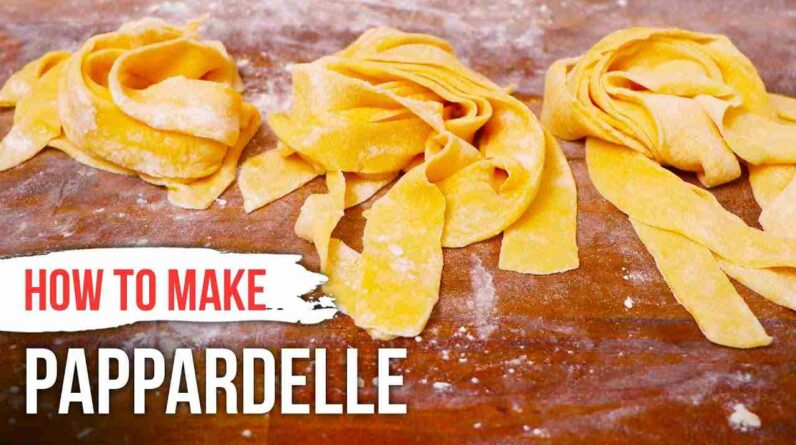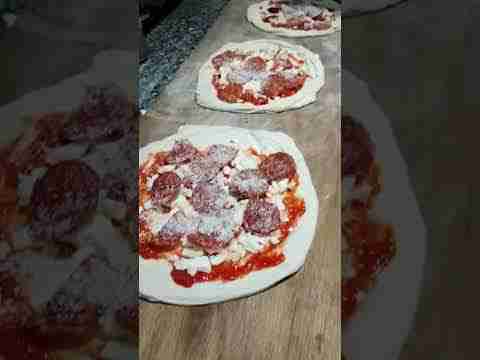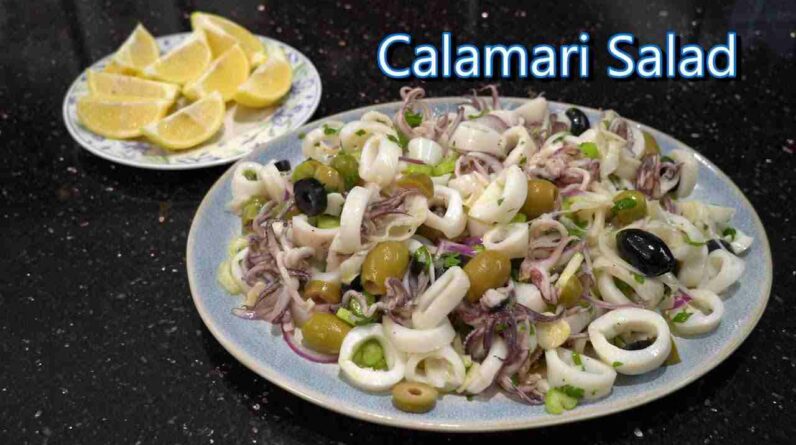Planning to create an enticing Italian cheeseboard but unsure where to start? Look no further! In this article, we have gathered essential tips and tricks that will guide you in selecting the perfect cheeses for your indulgent spread. Whether you are a novice cheese enthusiast or a seasoned connoisseur, we have you covered with our expert recommendations. Get ready to embark on a delightful journey of exploring the world of Italian cheese, and discover how to curate a cheeseboard that promises to impress your guests and tantalize your taste buds.

Factors to Consider
When selecting cheeses for an Italian cheeseboard, there are several factors to consider in order to create a well-balanced and delicious assortment. These factors include the flavor profile, texture, aging, region of origin, and pairing with accompaniments. By taking these factors into account, you can curate a cheeseboard that is both visually appealing and satisfying to the taste buds.
Flavor Profile
Flavor profile is one of the most important factors to consider when choosing cheeses for an Italian cheeseboard. It refers to the overall taste characteristics of the cheese, such as whether it is mild, tangy, nutty, or earthy. A good cheeseboard should have a variety of flavor profiles to cater to different preferences. For example, you can include a creamy and mild cheese like Mozzarella, a sharp and salty cheese like Pecorino Romano, and a rich and complex cheese like Gorgonzola. By offering a range of flavors, you ensure that there is something for everyone to enjoy.
Texture
Texture plays a crucial role in the overall sensory experience of eating cheese. It refers to the firmness, smoothness, and mouthfeel of the cheese. When selecting cheeses for your Italian cheeseboard, it’s a good idea to include a variety of textures to add interest and contrast. For instance, you can choose hard cheeses like Parmigiano-Reggiano and Asiago, semi-soft cheeses like Fontina and Provolone, as well as soft cheeses like Burrata and Ricotta. This combination of textures will not only create a visually appealing cheeseboard but also provide a diverse palate experience.
Aging
Another factor to consider when selecting cheeses for your Italian cheeseboard is the aging process. Aging affects the flavor, texture, and aroma of the cheese, making it an important consideration for a well-rounded cheeseboard. For example, Parmigiano-Reggiano is aged for a minimum of 24 months, resulting in a hard and crystalline texture with intense nutty flavors. On the other hand, Mozzarella is a fresh cheese that is best enjoyed shortly after it is made. By including a mix of aged and fresh cheeses, you can showcase the wide range of flavors and textures that Italian cheeses have to offer.
Region of Origin
Italian cheeses are renowned for their regional diversity, each offering unique flavors and characteristics. When putting together an Italian cheeseboard, it’s a great idea to include cheeses from different regions to showcase the culinary heritage of Italy. For instance, Parmigiano-Reggiano is from Emilia-Romagna, Pecorino Romano from Sardinia, Gorgonzola from Lombardy, and Mozzarella from Campania. By including cheeses from various regions, you not only add variety to your cheeseboard but also celebrate the rich cheese-making traditions of Italy.
Pairing with Accompaniments
To elevate your Italian cheeseboard, consider the accompaniments that complement the flavors and textures of the cheeses. Bread and crackers are a classic choice to serve alongside cheeses, providing a neutral base that allows the flavors of the cheese to shine. Fresh and dried fruits like grapes, figs, and apricots add a touch of sweetness and acidity to balance the richness of the cheese. Nuts such as walnuts, almonds, and hazelnuts provide a crunchy texture and a nutty flavor that complements many cheeses. Lastly, honey and jams can be drizzled over the cheese to add a touch of sweetness and contrast. Experiment with different combinations to find the perfect accompaniments that enhance the flavors of your chosen cheeses.
Types of Cheese to Include
To create a well-rounded Italian cheeseboard, it’s important to select a variety of cheese types. This ensures that there is something for every palate and adds visual interest to the presentation.
Hard Cheeses
Hard cheeses are firm and usually aged, resulting in a dense texture and concentrated flavors. Parmigiano-Reggiano is a prime example of a hard cheese, known for its granular texture and nutty taste. Pecorino Romano is another popular hard cheese with a sharp, salty flavor profile. Including hard cheeses on your cheeseboard adds complexity and depth to the overall tasting experience.
Semi-Soft Cheeses
Semi-soft cheeses have a pliable texture and tend to be milder in flavor compared to hard cheeses. Fontina and Provolone are common examples of semi-soft Italian cheeses. Fontina has a buttery and slightly nutty profile, while Provolone offers a tangy and creamy taste. Adding semi-soft cheeses to your cheeseboard provides a contrast in texture and a more delicate flavor option.
Soft Cheeses
Soft cheeses are creamy and spreadable, often characterized by their rich and luscious texture. Burrata and Ricotta are popular choices for soft cheeses on an Italian cheeseboard. Burrata is known for its creamy center and delicate flavor, while Ricotta offers a mild and slightly sweet taste. Including soft cheeses allows for easy spreading onto bread or crackers, creating a luxurious and indulgent experience.
Blue Cheeses
Blue cheeses have a distinct blue mold running through them, resulting in a pungent and tangy flavor. Gorgonzola is a classic blue cheese from Italy, known for its creamy texture and sharp taste. Adding a blue cheese to your cheeseboard adds a bold and intense flavor that pairs well with sweeter accompaniments like honey or fruits. This type of cheese adds complexity and a unique element to the overall cheeseboard.
Specific Cheeses to Consider
While the selection of cheeses for an Italian cheeseboard can vary based on personal preference, there are certain cheeses that are considered classics and should be considered when creating your board. The following list includes a variety of Italian cheeses that are widely loved and provide a well-rounded assortment.
Parmigiano-Reggiano
Parmigiano-Reggiano is often referred to as the “King of Cheeses.” This hard cheese is made from cow’s milk and aged for at least two years. It has a rich and nutty flavor with hints of caramel and a granular texture. Parmigiano-Reggiano is incredibly versatile and can be enjoyed on its own or used as a topping for various dishes.
Pecorino Romano
Pecorino Romano is a hard cheese made from sheep’s milk. It has a sharp and salty flavor, making it a favorite for grating over pasta dishes. Pecorino Romano pairs well with bold, Italian red wines and adds a savory kick to any cheeseboard.
Gorgonzola
Gorgonzola is a blue cheese with a creamy texture and a tangy, intense flavor. Made from cow’s milk, it is often enjoyed spread on bread or paired with fruits and nuts. Gorgonzola is a popular choice for cheeseboards as it brings a distinctive blue cheese element to the selection.
Mozzarella
Mozzarella is a soft and fresh cheese known for its mild and creamy taste. It is commonly used in dishes like Caprese salad and pizza. Mozzarella can be enjoyed on its own or paired with other cheeses on a cheeseboard to provide a contrast in textures.
Burrata
Burrata is a luxurious and creamy Italian cheese made from cow’s milk. It has a soft and delicate texture with a rich, buttery taste. Burrata is often served with bread, tomatoes, and olive oil for a simple yet elegant appetizer.
Ricotta
Ricotta is a versatile cheese known for its smooth and creamy texture. Made from whey, it has a slightly sweet flavor that pairs well with both sweet and savory accompaniments. Ricotta can be spread on bread or used in various Italian desserts like cannoli or cheesecake.
Fontina
Fontina is a semi-soft cheese with a buttery and slightly nutty flavor. It melts beautifully, making it a great choice for dishes like fondue or grilled cheese sandwiches. Fontina can also be enjoyed on its own, offering a mild and creamy taste on a cheeseboard.
Provolone
Provolone is a semi-soft cheese that is often aged, resulting in a slightly sharper and more robust flavor. It is commonly used as a deli cheese or melted over sandwiches. Provolone adds a tangy and savory element to a cheeseboard.
Asiago
Asiago is a hard cheese with a crumbly texture and a nutty, slightly sweet flavor. It is often grated over pasta or shaved onto salads. Asiago brings a distinct flavor and texture to a cheeseboard, adding depth and complexity.
Taleggio
Taleggio is a semi-soft cheese with a unique aroma and a rich, creamy taste. It has a thin, edible rind that adds to its character. Taleggio pairs well with crusty bread and dried fruits, making it a delicious addition to any Italian cheeseboard.
Presentation and Arrangement
The presentation and arrangement of the cheeses on your Italian cheeseboard can greatly enhance the overall dining experience. Consider the following tips to create an eye-catching and visually appealing cheeseboard:
Varying Colors
When selecting cheeses, aim for a variety of colors to create visual interest. Hard cheeses like Parmigiano-Reggiano have a pale yellow hue, while blue cheeses like Gorgonzola have a distinctive marbled appearance. Additionally, soft cheeses like Burrata and Ricotta have a creamy white color. By including cheeses with different colors, you can enhance the aesthetic appeal of your cheeseboard.
Different Shapes and Sizes
To add diversity to your cheeseboard, choose cheeses of different shapes and sizes. For example, the rectangular Parmigiano-Reggiano contrasts nicely with the rounder and irregular-shaped Burrata. The varying shapes and sizes of the cheeses provide an interesting visual aspect and make the cheeseboard more visually appealing.
Arranging from Mild to Strong
When arranging your cheeseboard, consider arranging your cheeses from mildest to strongest in terms of flavor. This allows your guests to experience a progression of flavors as they work their way through the cheeses. Start with mild cheeses like Mozzarella or Ricotta, then move on to more assertive cheeses like Pecorino Romano or Gorgonzola. This arrangement ensures that the flavors are balanced and builds excitement throughout the tasting experience.
Consideration of Accompaniments
When arranging your cheeseboard, take into account the accompaniments that will be served alongside the cheeses. Position them strategically to create a visually pleasing arrangement. For example, place bowls of dried fruits next to the blue cheese to balance its boldness, or arrange slices of crusty bread around the softer cheeses for easy spreading. The proper arrangement of the cheeses and accompaniments can make it easier for guests to navigate and enjoy the cheeseboard.

Serving Suggestions
To fully enjoy an Italian cheeseboard, it’s important to consider how the cheeses should be served. Pay attention to factors like temperature, cutting and slicing techniques, allowing the cheese to breathe, providing appropriate utensils, and using appealing plating techniques.
Temperature
Temperature plays a crucial role in the flavor and texture of cheese. Most cheeses are best enjoyed at room temperature, as cold temperatures can dull the flavors. Therefore, it’s essential to take your cheeses out of the refrigerator at least one hour before serving. This allows the cheeses to come to room temperature, enhancing their aromas and flavors.
Cutting and Slicing
Different cheeses require different cutting and slicing techniques to fully bring out their taste and texture. Hard cheeses like Parmigiano-Reggiano can be cut into thin slices or shaved using a cheese plane. Soft cheeses like Mozzarella or Burrata can be served in larger portions or torn into bite-sized pieces. When presenting your cheeseboard, consider including a variety of cutting and slicing techniques to accommodate the different textures of the cheeses.
Allowing Cheese to Breathe
Cheeses, especially softer varieties, benefit from being allowed to breathe before serving. This means removing the cheese from its packaging and allowing it to sit at room temperature for a short period of time. Allowing cheese to breathe enhances its flavors and aromas, resulting in a more enjoyable tasting experience. If you’re serving cheeses with different rinds, such as Brie or Taleggio, make sure to leave them exposed for the full aromatic experience.
Providing Cheese Knives
To make it easier for guests to serve themselves and enjoy the cheeses, it’s important to provide appropriate utensils. Cheese knives are specifically designed for cutting and serving cheese, and they come in different shapes and sizes depending on the type of cheese. Include a variety of cheese knives on your cheeseboard, ensuring that each cheese has its own knife. This allows guests to sample different cheeses without mixing their flavors.
Plating Tips
The way you plate your cheeses can greatly enhance the visual appeal of your Italian cheeseboard. Use a large wooden or slate cheeseboard as the base, as this provides a rustic and inviting presentation. Start by arranging the cheeses in different sections or clusters, considering the varying shapes and colors. This creates an interesting and visually pleasing display. Then, strategically place the accompaniments around the cheeses, making sure to leave space for guests to access them easily. Garnish with fresh herbs or edible flowers for added visual impact.
Choosing Accompaniments
While cheeses are the stars of an Italian cheeseboard, the accompaniments play an important supporting role. They provide flavor contrast, texture variety, and additional interest to the overall tasting experience. When selecting accompaniments for your cheeseboard, consider the following suggestions:
Bread and Crackers
Bread and crackers are essential in any cheeseboard as they provide a neutral base for the cheeses. Choose a selection of crusty bread, such as baguette slices or Italian ciabatta, as well as a variety of crackers with different flavors and textures. The bread and crackers act as vehicles for enjoying the cheeses and enhance the overall taste experience.
Fresh and Dried Fruits
Fresh and dried fruits add a touch of sweetness and acidity that complements the richness of the cheeses. Grapes, figs, and sliced apples or pears are popular choices for fresh fruits. Dried fruits like apricots, figs, and cherries provide a concentrated sweetness that pairs well with many cheese flavors. The combination of fresh and dried fruits brings a vibrant and refreshing element to your cheeseboard.
Nuts
Nuts add a crunchy texture and a nutty flavor that pairs well with many cheeses. Walnuts, almonds, and hazelnuts are classic choices and bring a delightful contrast to the creamy and smooth cheeses. Serve the nuts in a separate bowl or strategically place them near the different cheeses for guests to enjoy alongside their cheese selections.
Honey and Jams
Honey and jams add a touch of sweetness and depth of flavor to the cheeseboard. Drizzle honey over the blue cheese to balance its pungency, or spread a fig jam onto a slice of Parmigiano-Reggiano for a delicious combination of flavors. Experiment with different types of honey and jams to find the perfect pairing for each cheese on your board.
By carefully selecting and arranging the cheeses, considering the accompaniments, and presenting the cheeseboard in an inviting manner, you can create a remarkable Italian cheeseboard that will delight your guests. Whether it’s a gathering with friends or a special occasion, a thoughtfully curated cheeseboard is sure to be a hit and leave a lasting impression. So go ahead, explore the world of Italian cheeses, and embark on a culinary journey through the flavors and textures of Italy.










